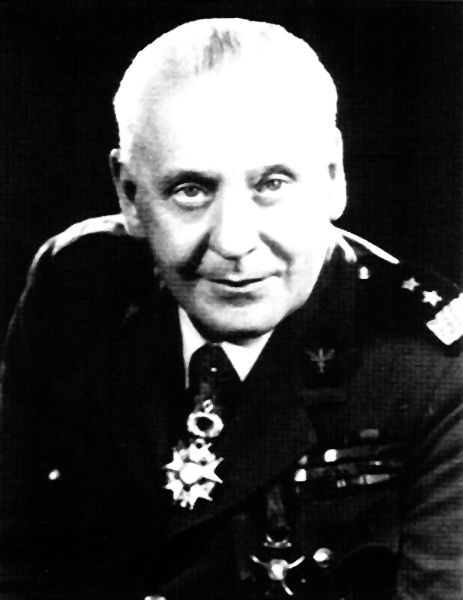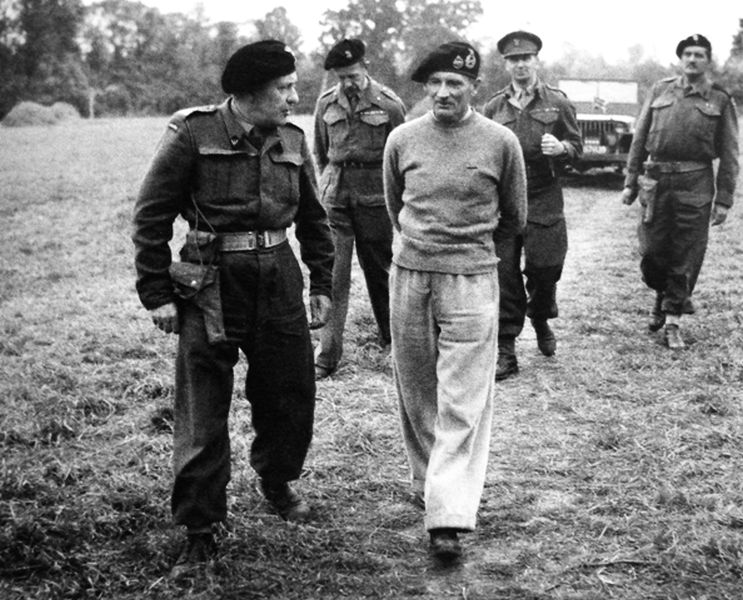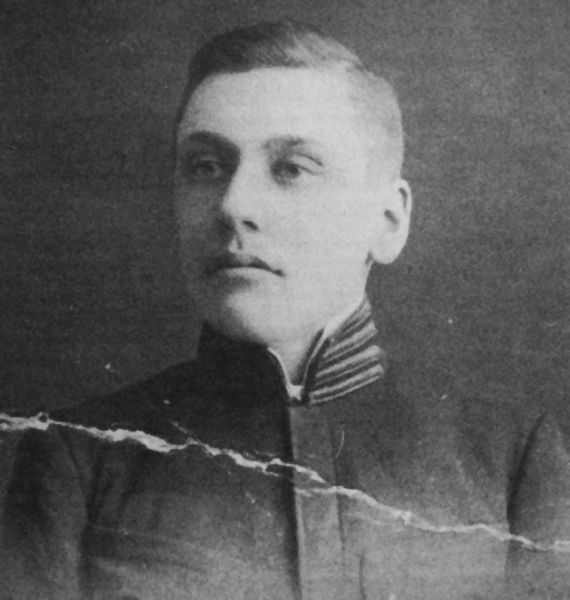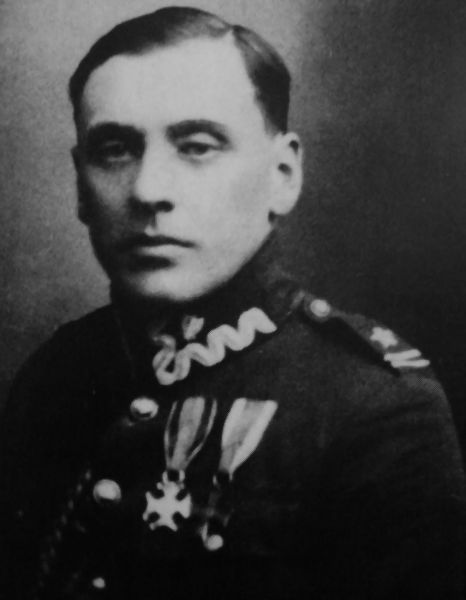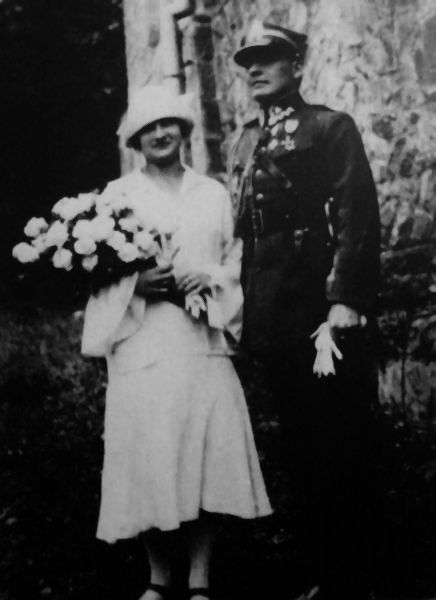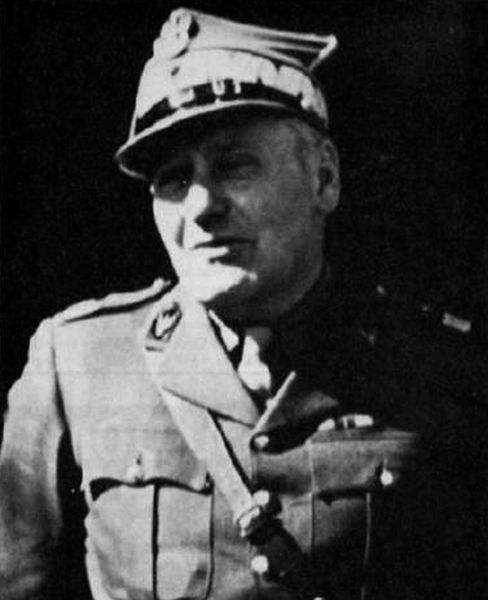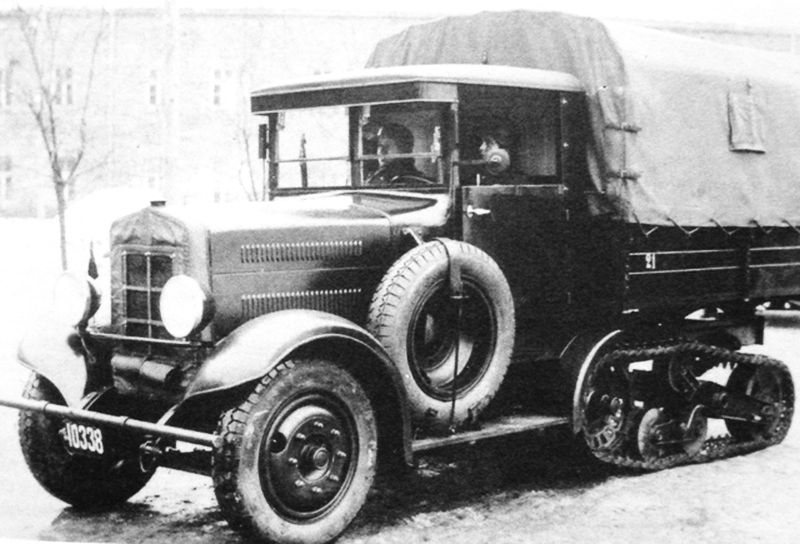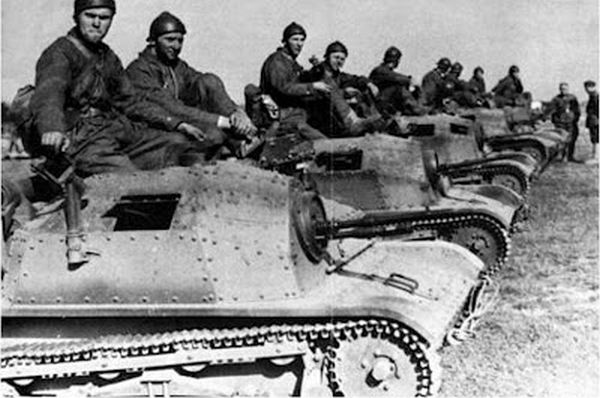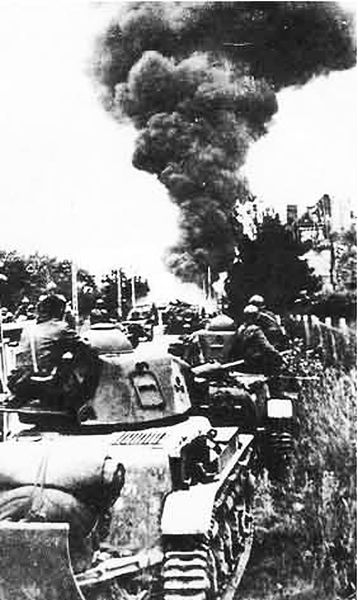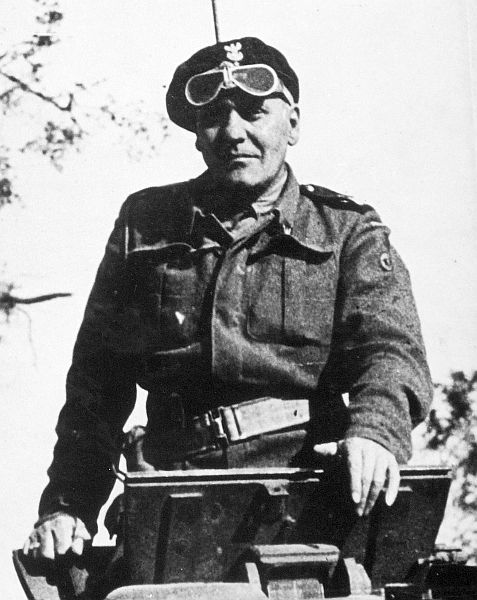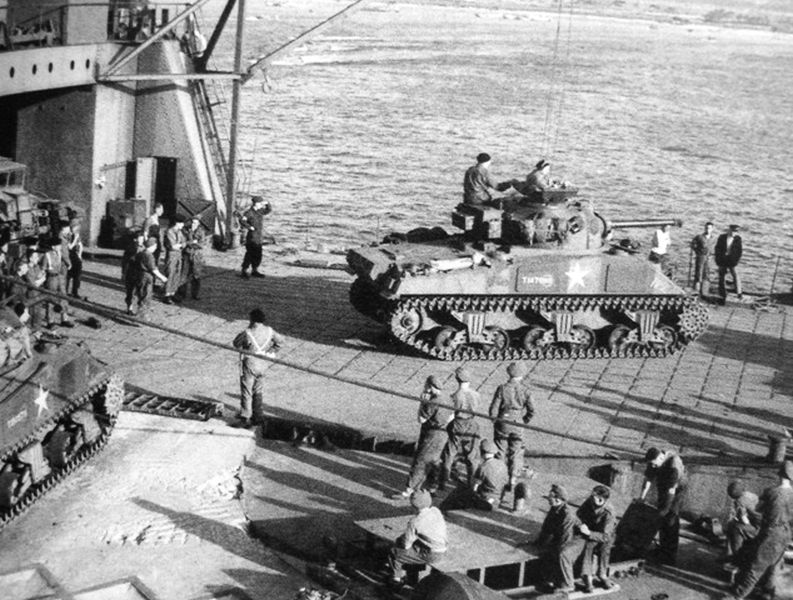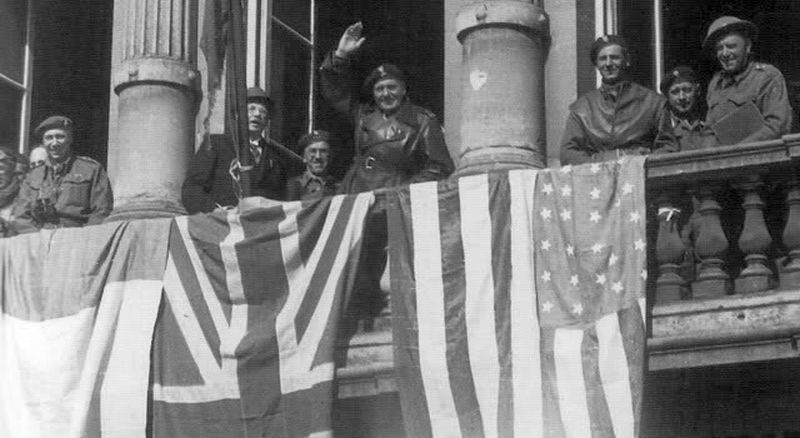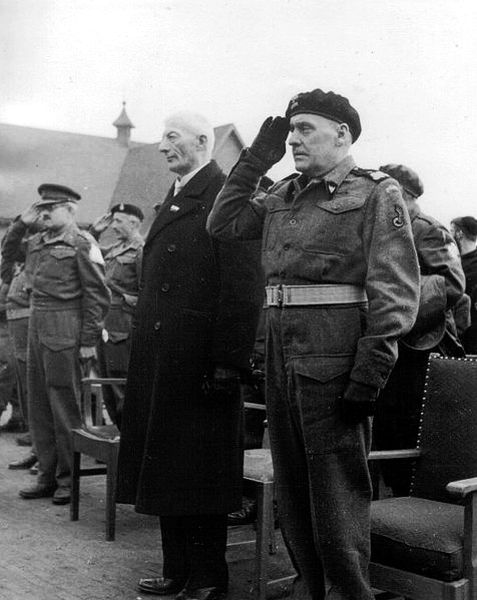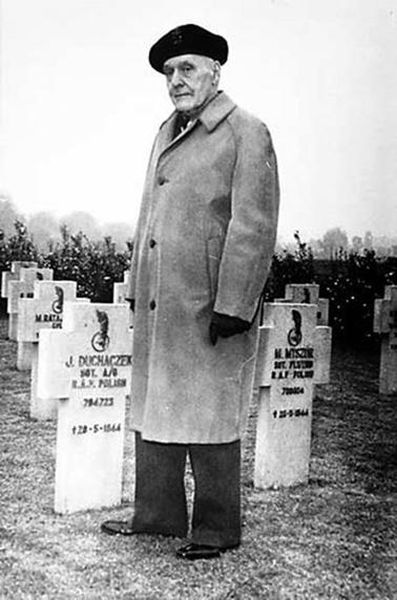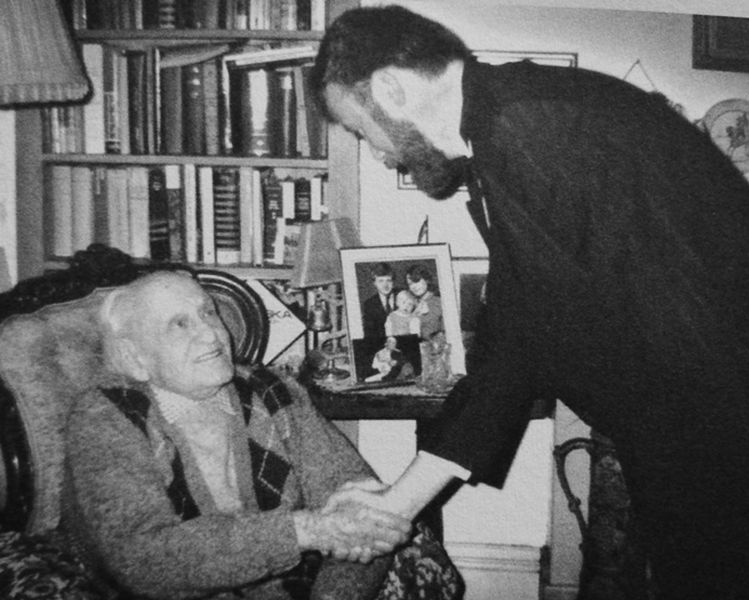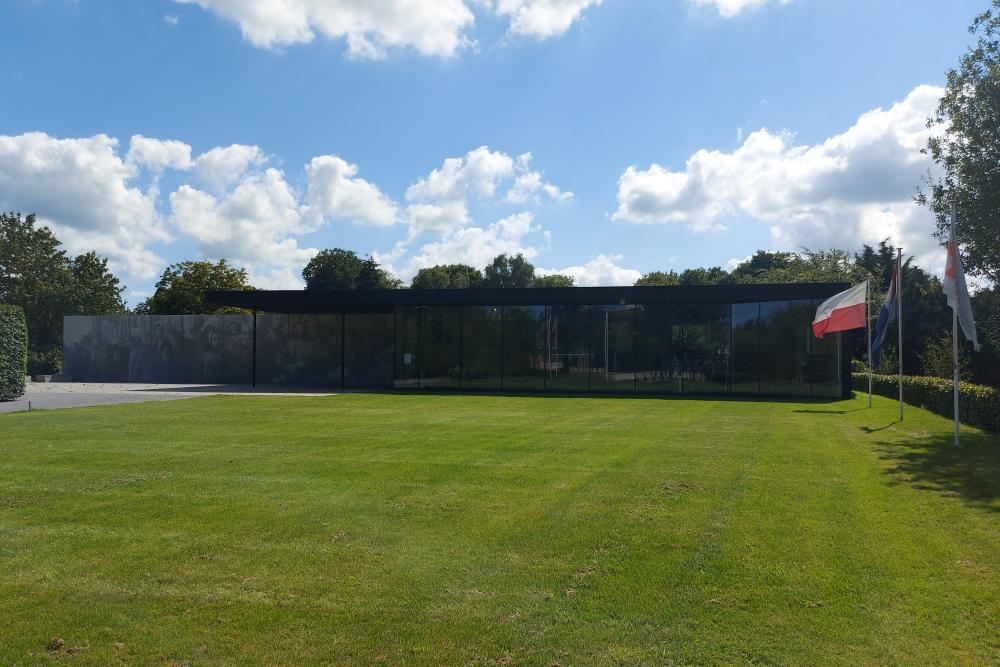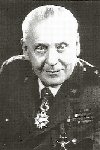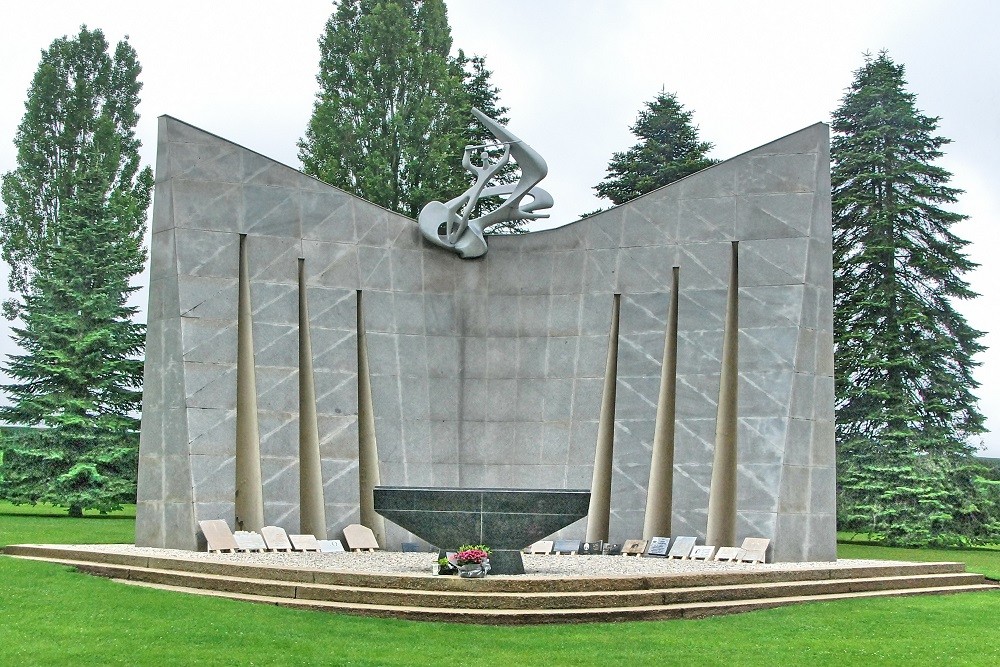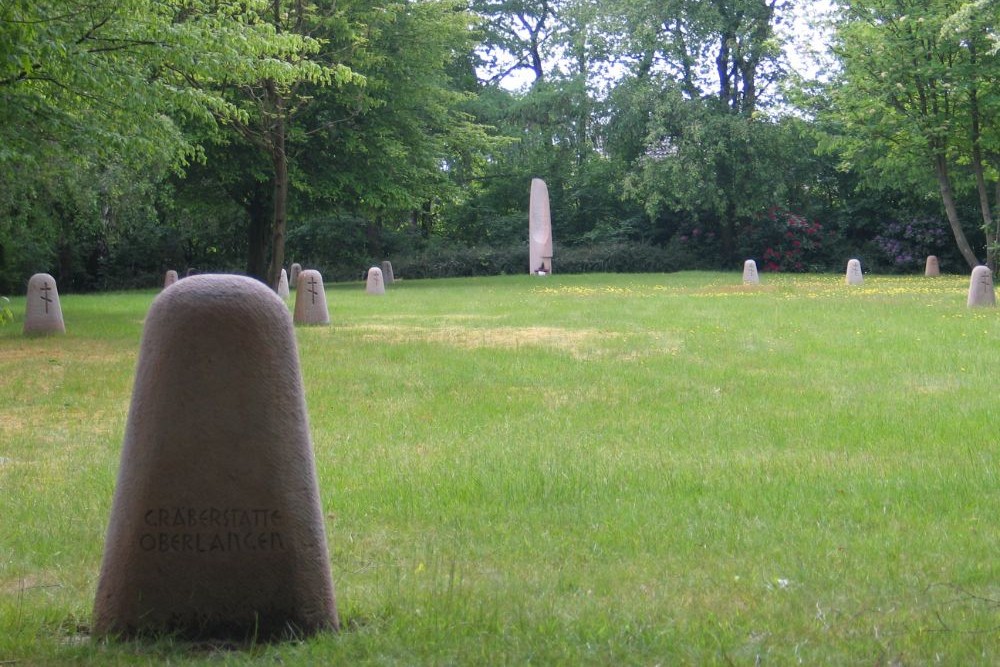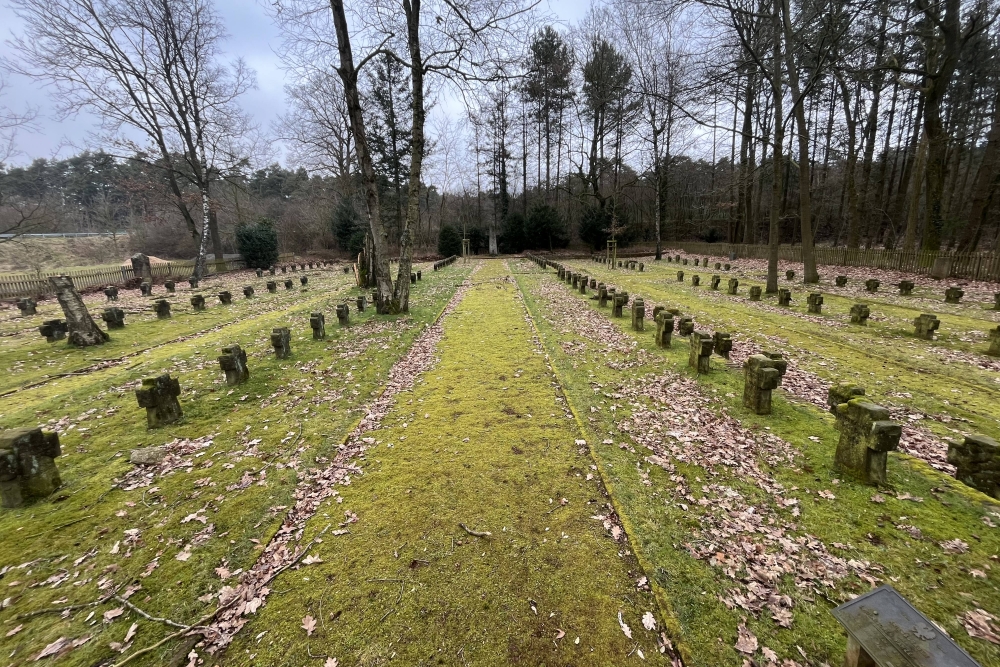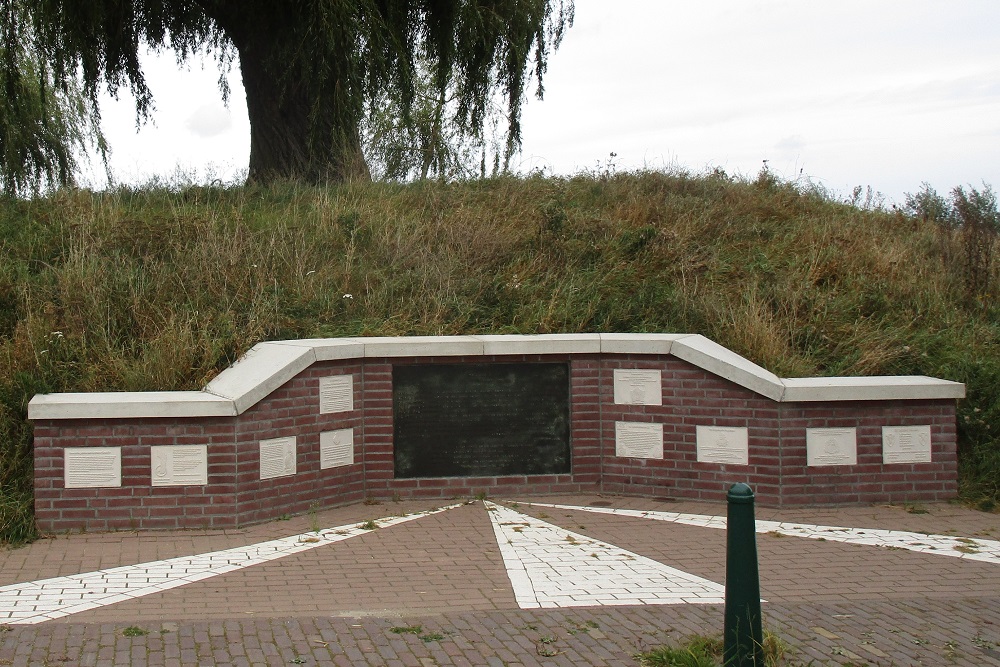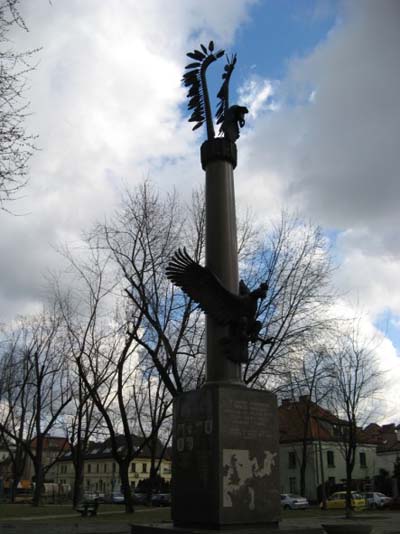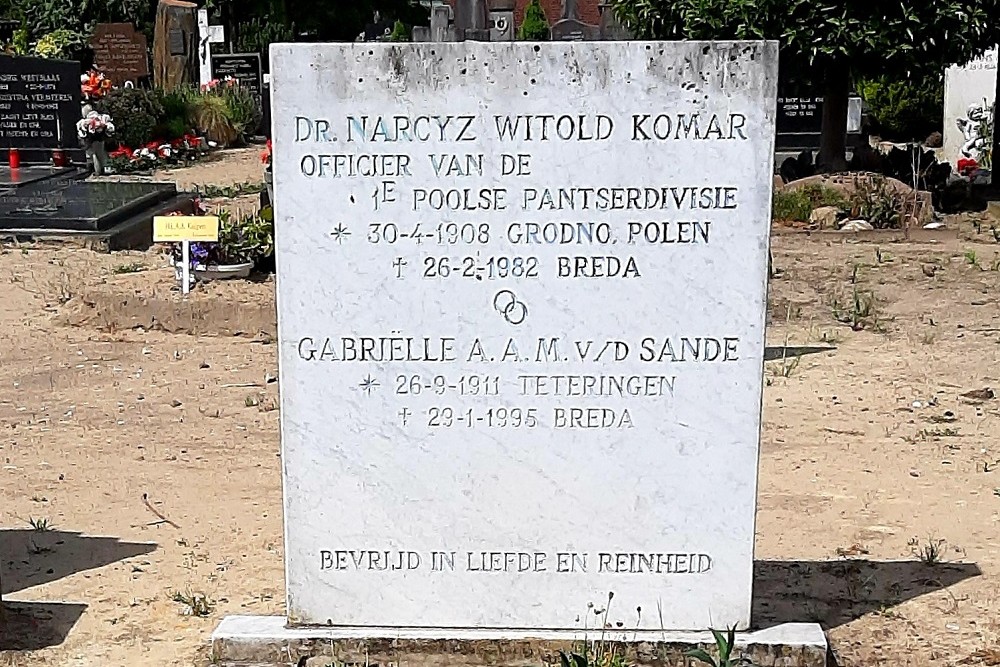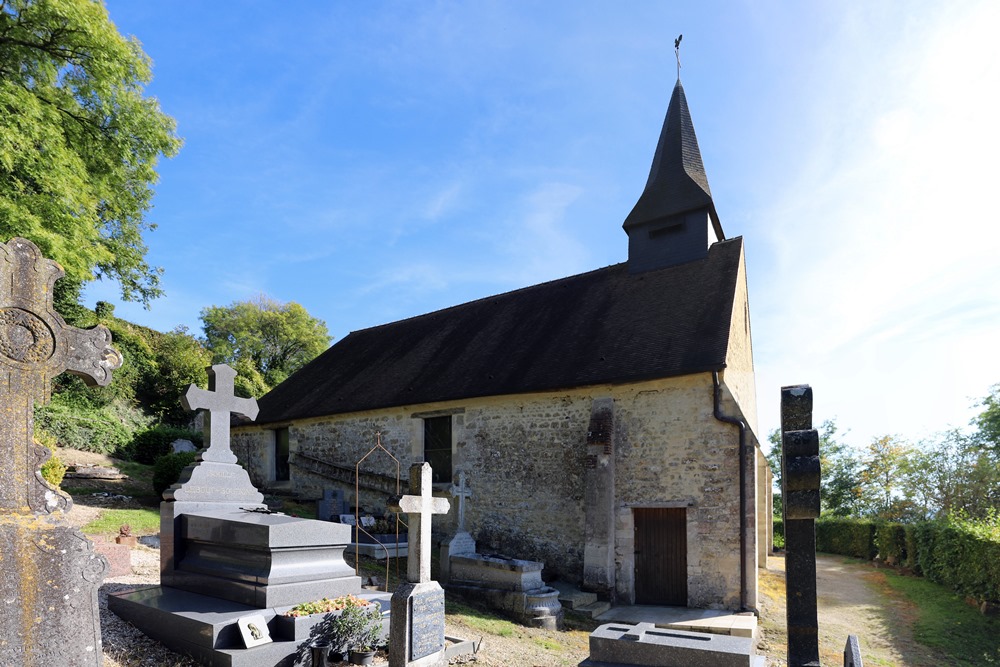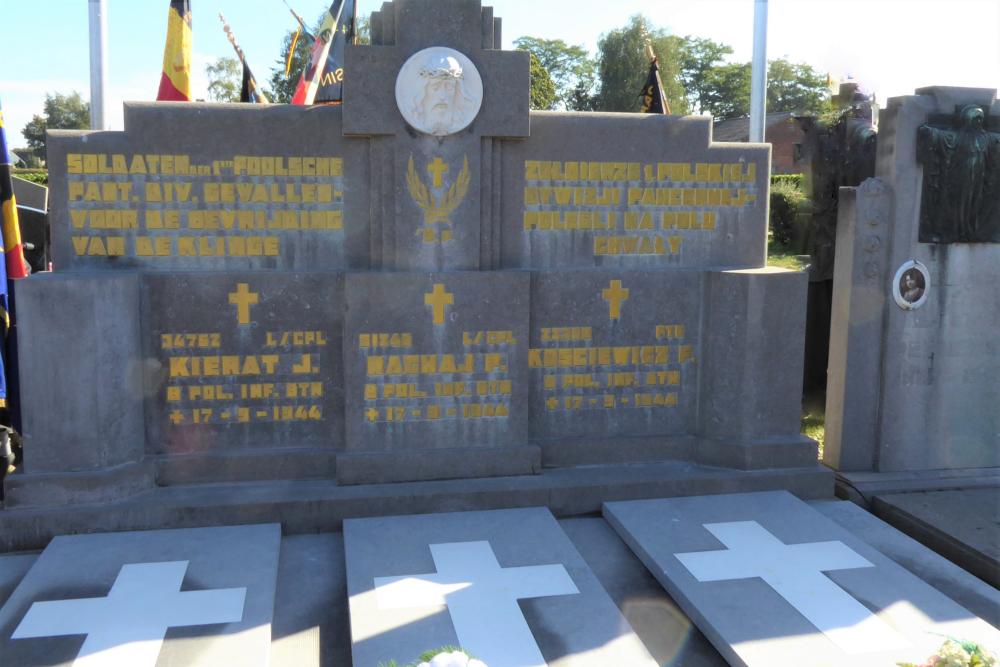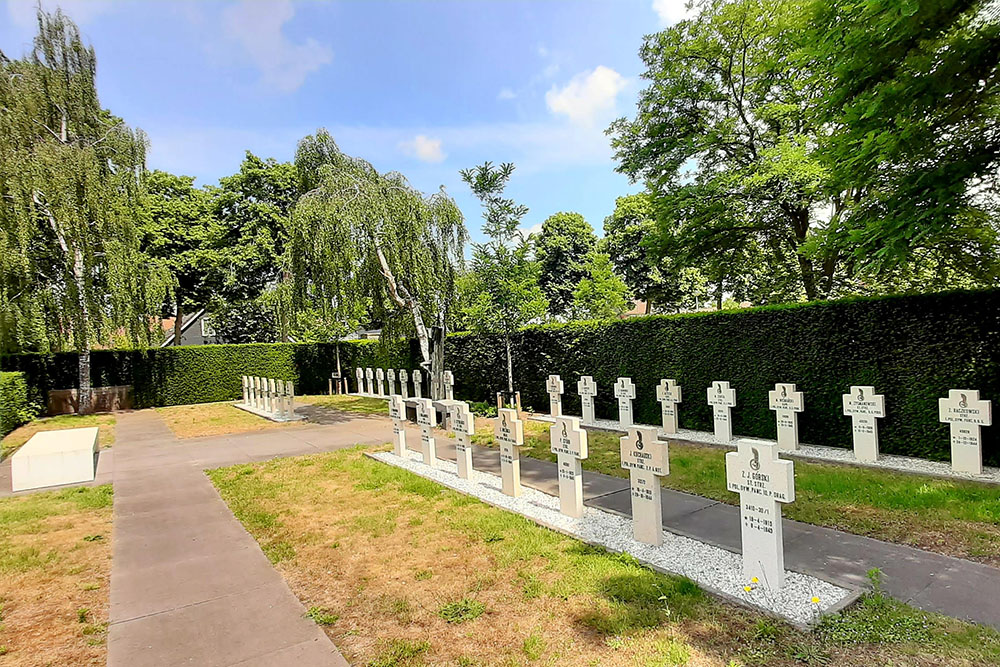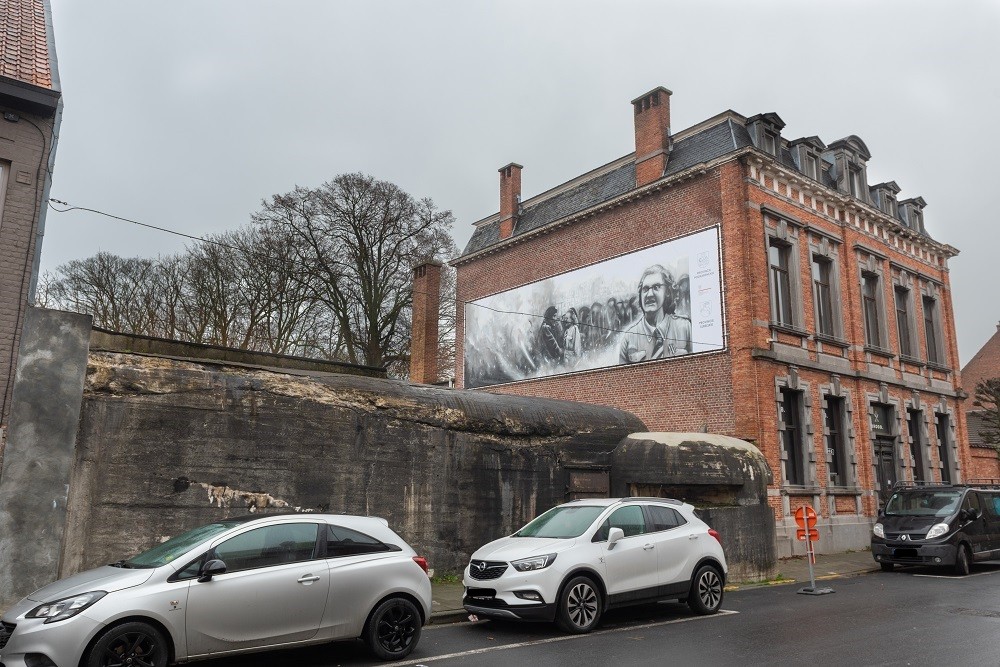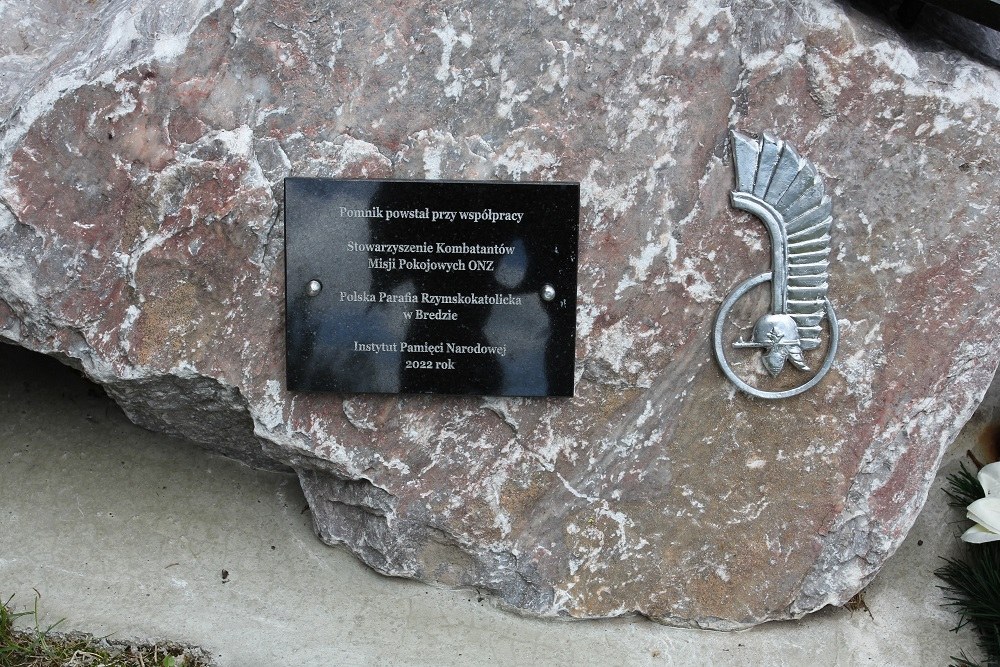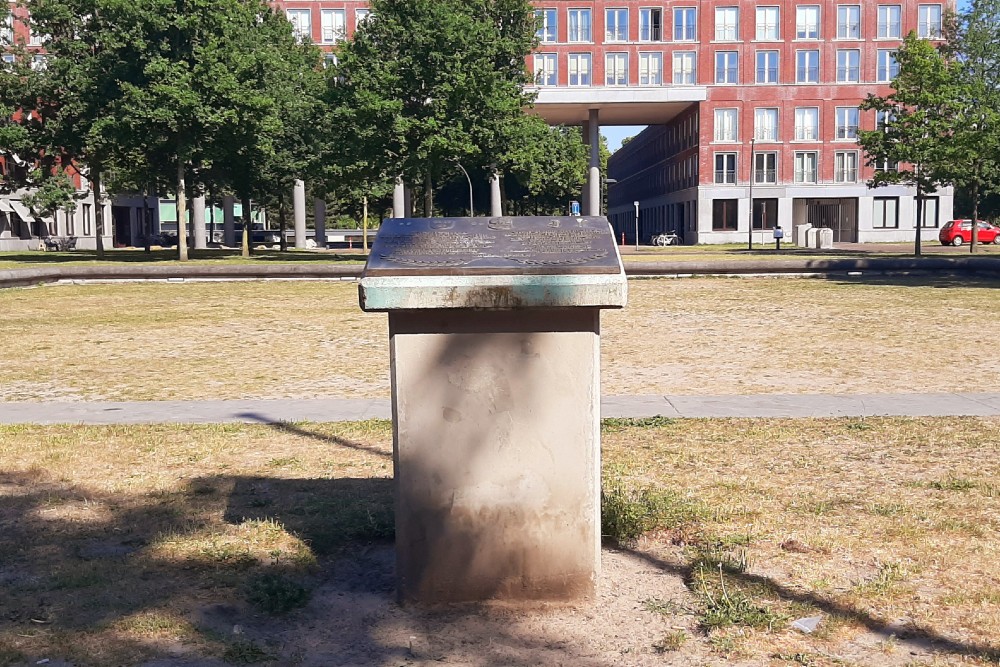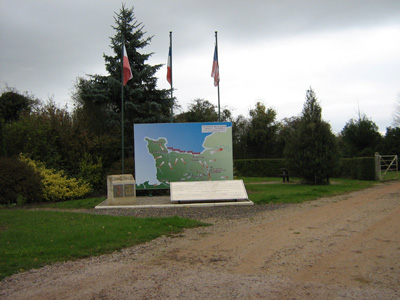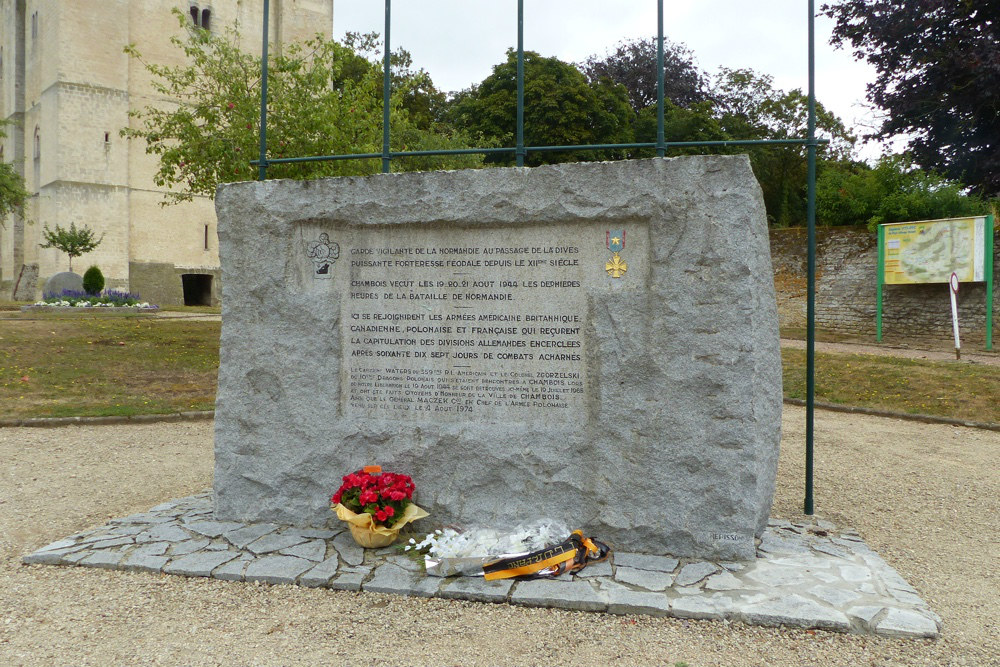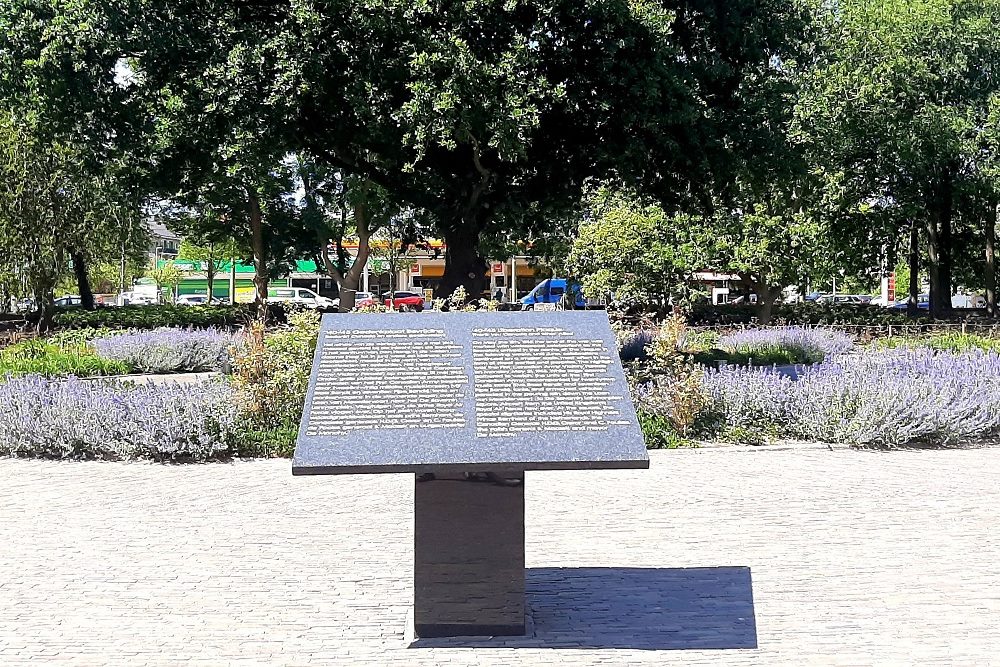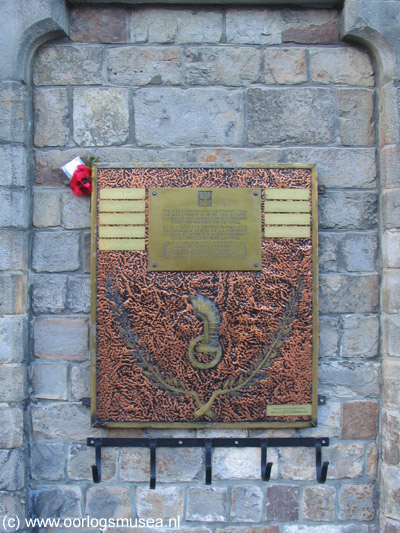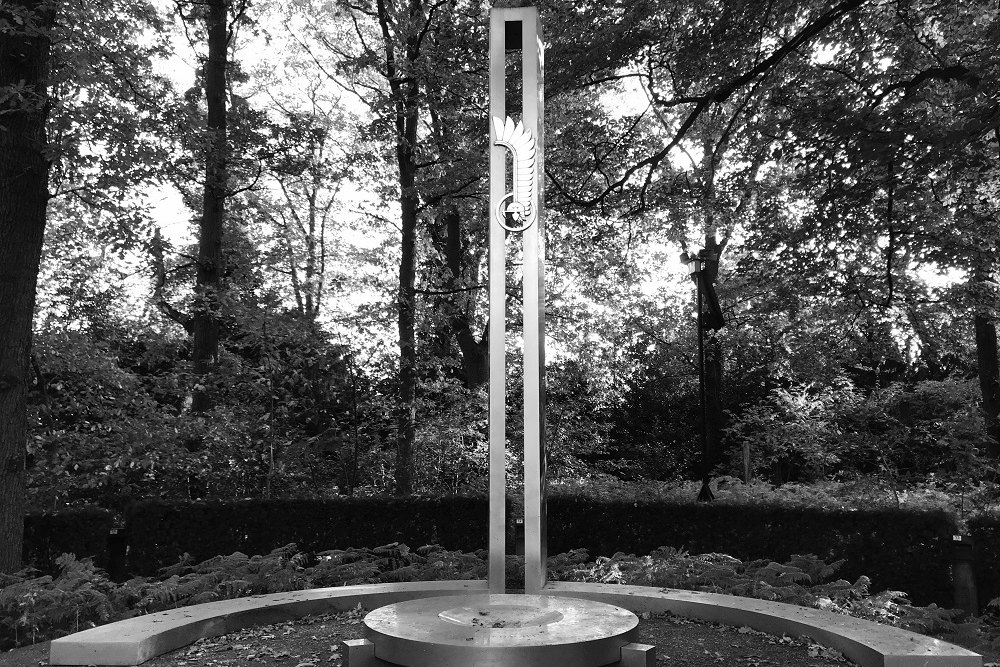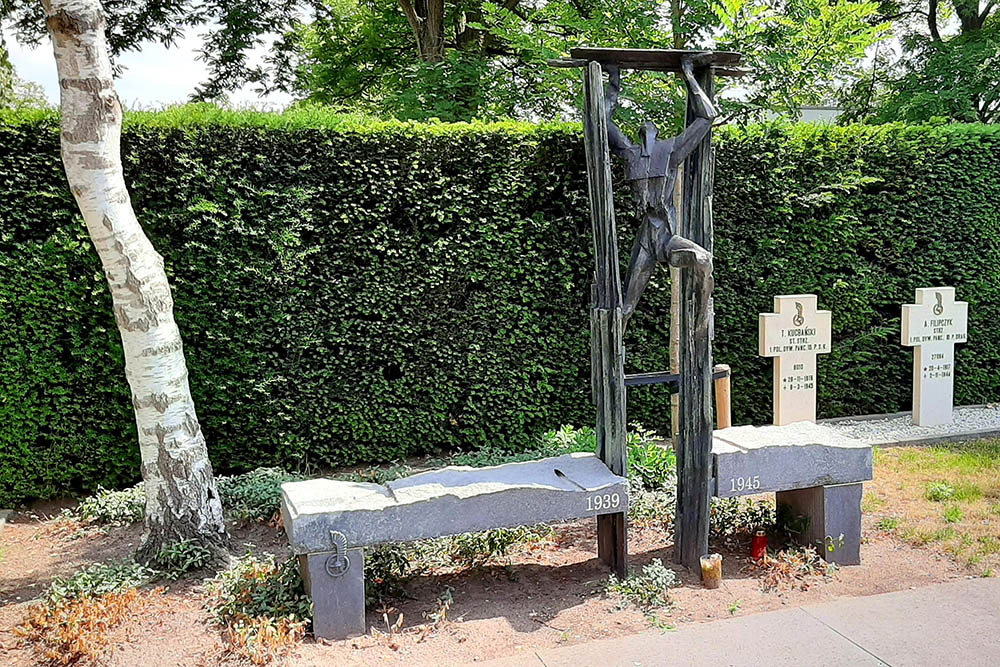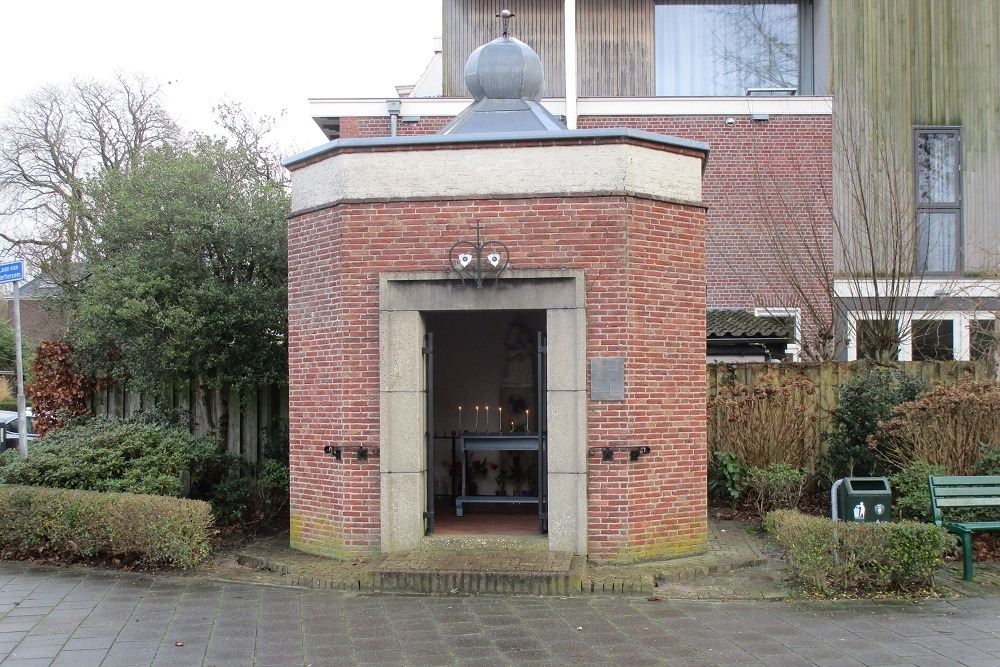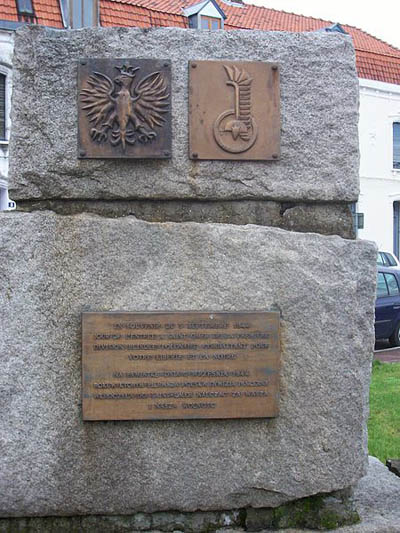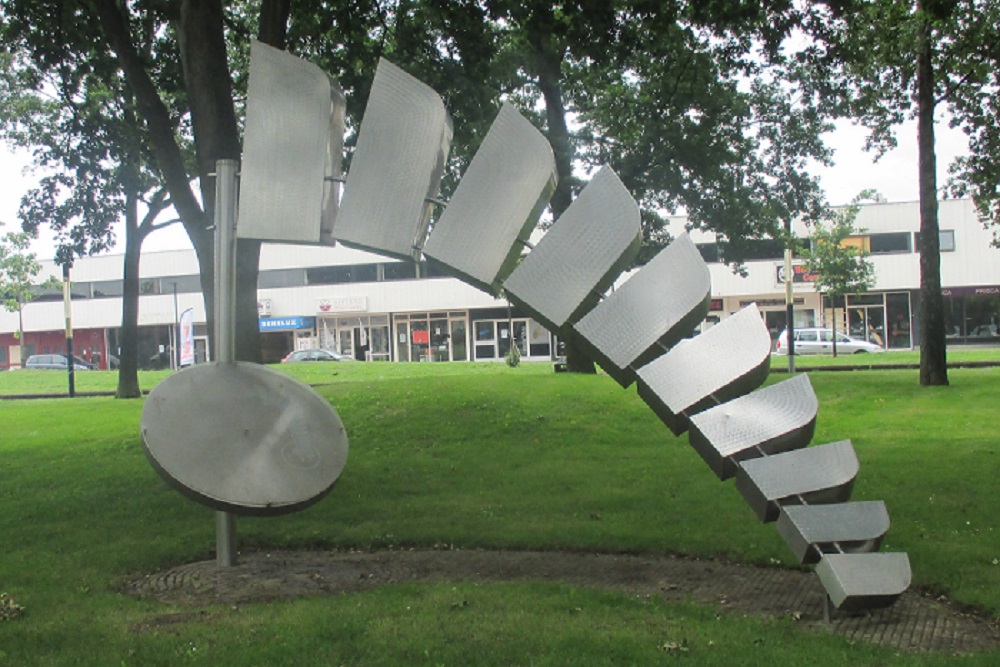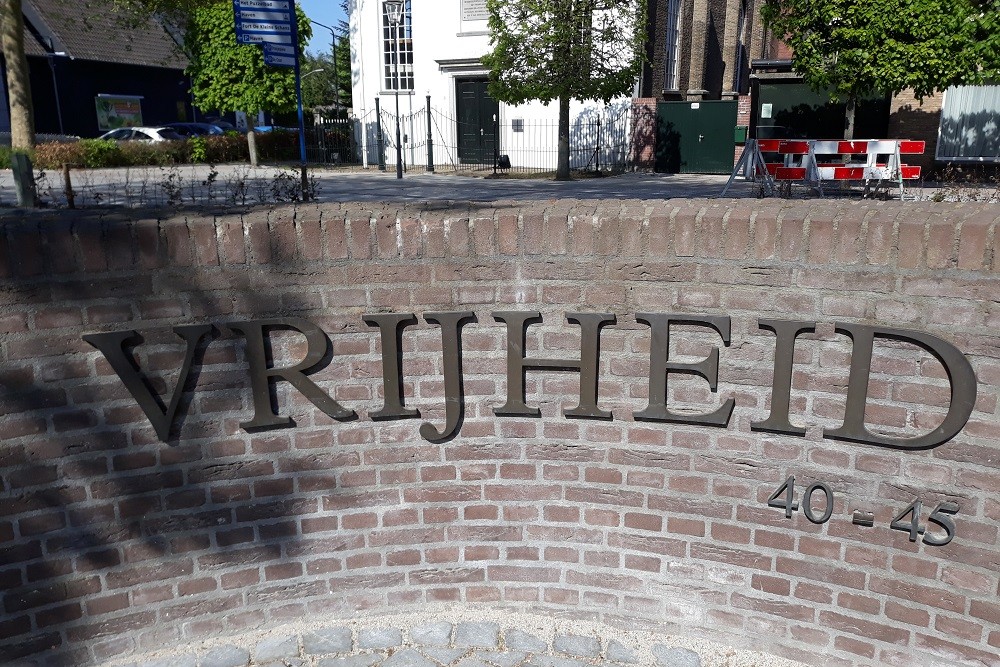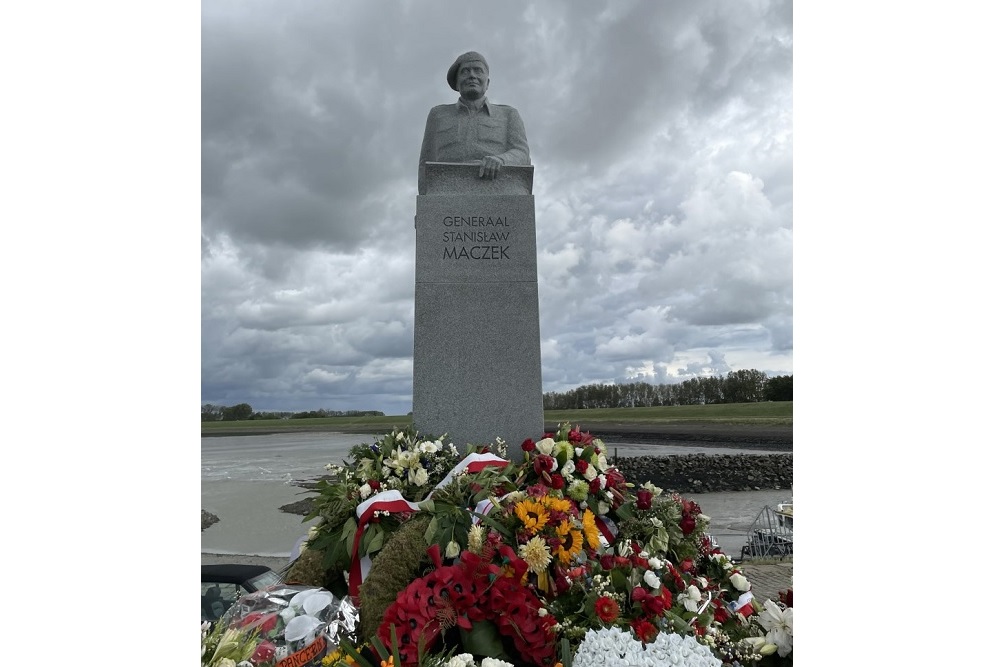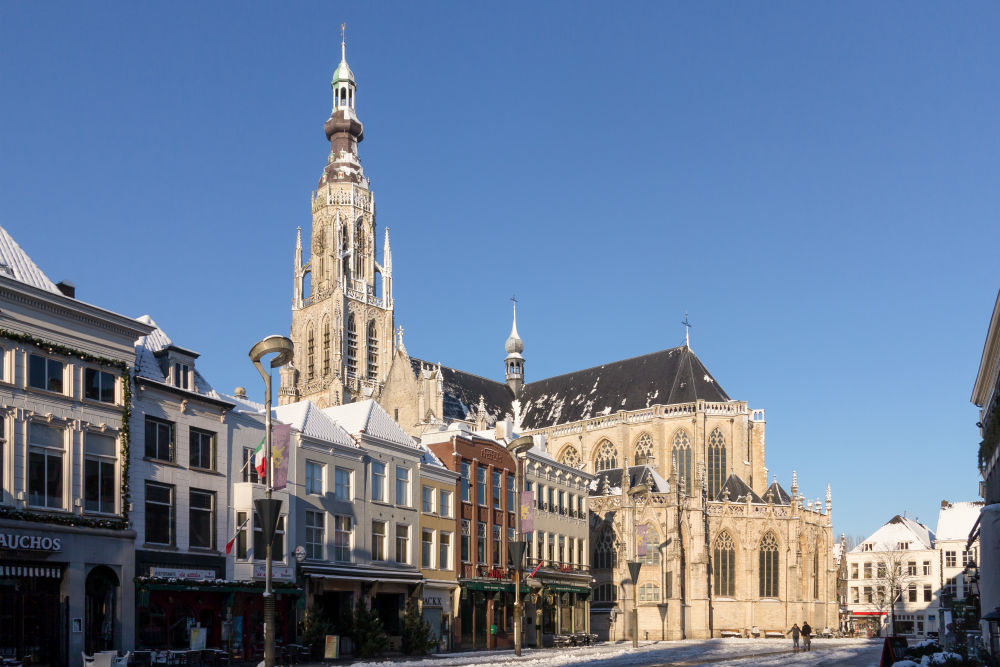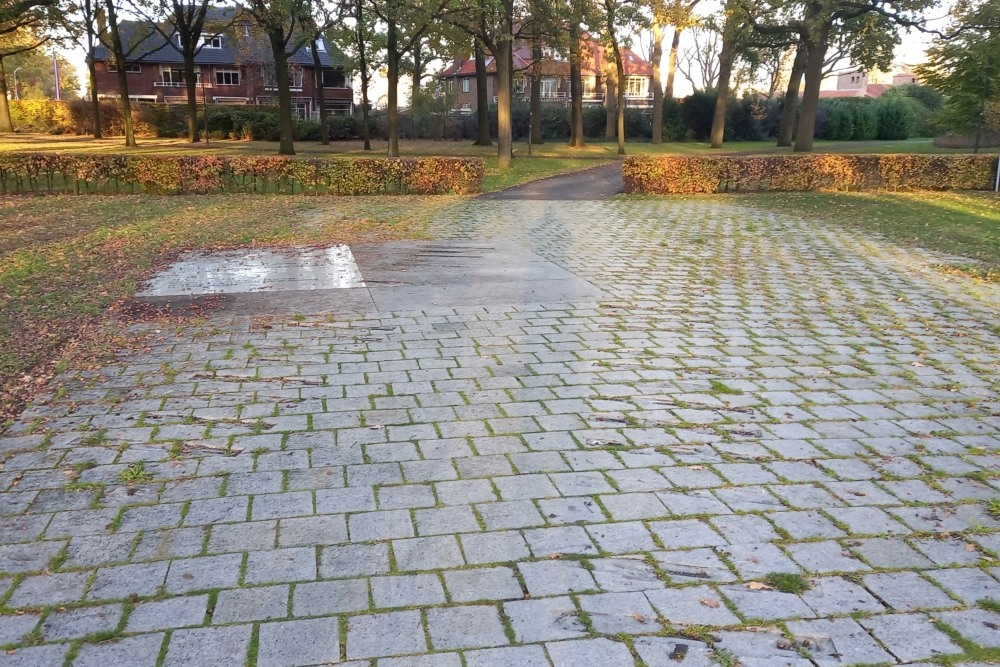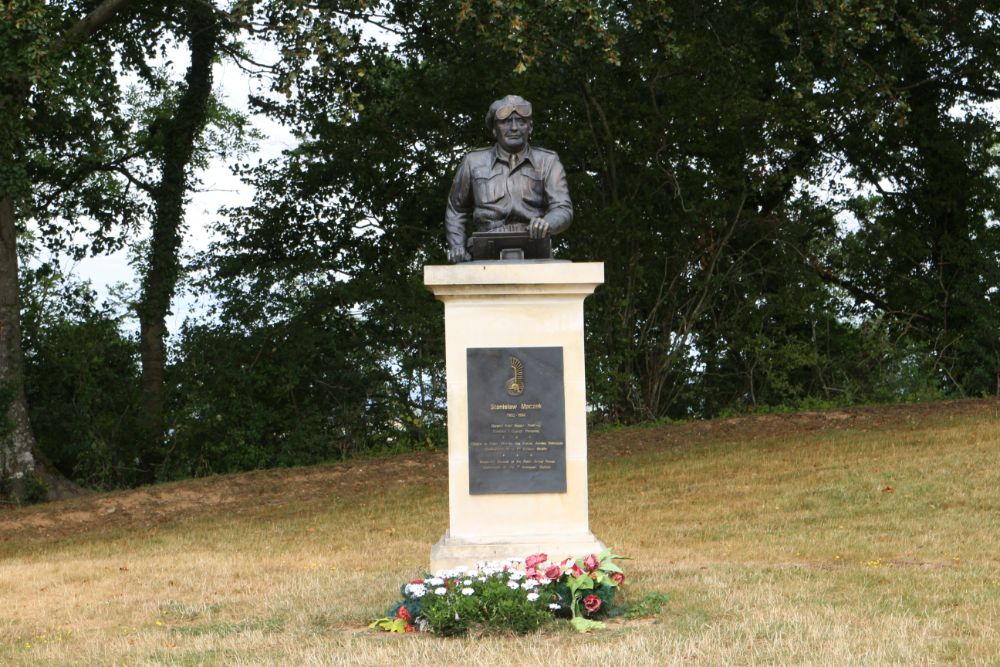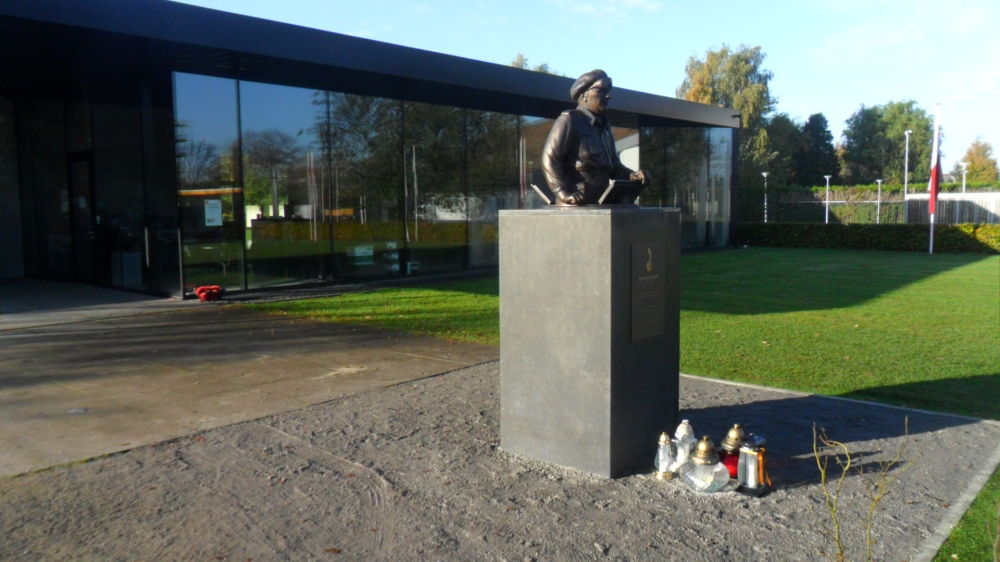Introduction
Stanislaw Wladyslaw Maczek was a Polish general who commanded the only motorized division of the Polish army at the beginning of the Second World War. After the fall of Poland, he escaped to France where he established a new motorized division. After the downfall of France, he founded the First Polish armoured division in Great Britain, contributing greatly to the allied victory in Western Europe. Maczek was very popular with his men and was honoured by the French, Belgian and Dutch population, although he was rather underestimated by his Allied combatants.
Stanislaw Maczek however, was above all a person of international renown. He was born in Lwów, originally a Polish town, then part of the Austro-Hungarian double monarchy and today situated in the Ukraine. Maczek’s ancestors, however were Croats. During the First World War, he fought as an officer in the Austro-Hungarian army in Italy and later on in the Polish army in the war between Poland and the Ukraine and in the war between Poland and the Soviet-Union. Afterwards he graduated from the Higher Military School at Warsaw. After the fall of Poland he and a large number of his men of the 10th Motorized Cavalry Brigade moved to Hungary and from there to France. In June 1940 Maczek escaped again with a large number of his men, by way of North-Africa and Portugal to Great Britain.
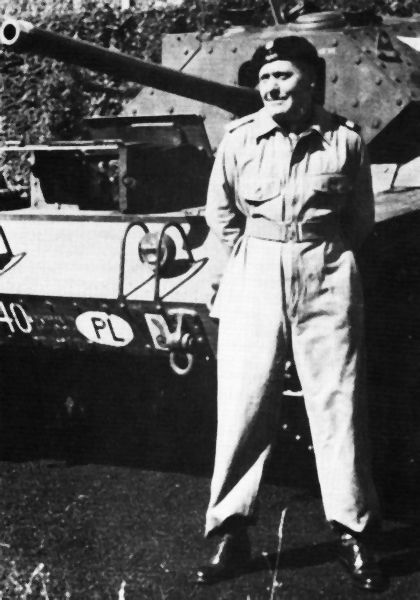
General Maczek, commander of the First Polish Armoured Division with one of his tanks. Source: Maczek Garizzim
In Scotland, with British materiel, he built the First Polish Armoured Division, which landed in Normandy in August 1944, as part of the First Canadian Army. His tanks and armoured vehicles played an important role in defeating fourteen German divisions during the battle of Falaise and in the liberation of France, Belgium and the Netherlands. Eventually, he ended his advance with the capture of Wilhelmshaven where he accepted the capitulation of the entire German garrison and over 200 Kriegsmarine vessels.
After the war the communist regime of Poland deprived him of his Polish citizenship, forcing him to remain in Scotland. Until well in the 1960s, he was employed among other things as a bartender in Edinburgh because the British did not grant him a military pension. On December 1994 he was buried in the Polish military cemetery at Breda.
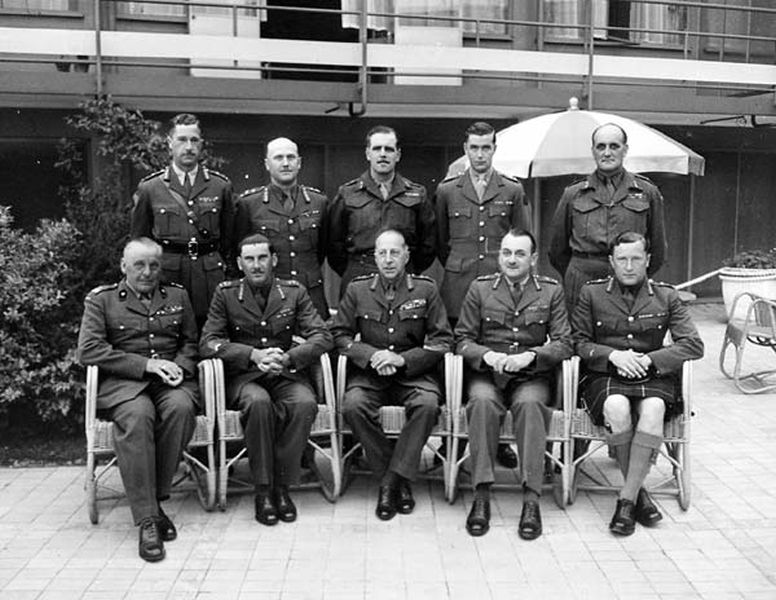
Generals of the First Canadian Army in Hilversum on 20 May 1945. Front left General Maczek. Source: Junobeach
Definitielijst
- Brigade
- Consisted mostly of two or more regiments. Could operate independently or as part of a division. Sometimes they were part of a corps instead of a division. In theory a brigade consisted of 5,000 to 7,000 men.
- capitulation
- Agreement between fighting parties concerning the surrender of a country or an army.
- Cavalry
- Originally the designation for mounted troops. During World War 2 the term was used for armoured units. Main tasks are reconnaissance, attack and support of infantry.
- First World War
- Took place from 1914 till 1918 and is also named The Great War. The conflict started because of increased nationalism, militarism and neo-colonialism in Europe. Two alliances battled one another during the 4-year war, which after a dynamic start, resulted into static trench warfare. The belligerents were the Triple Alliance (consisting of Great-Britain, France, and Russia; later enlarged by Italy and the USA, amongst others) on the one hand and the Central Powers (consisting of Germany, Austria-Hungary, Bulgaria and the Ottoman empire) on the other hand. The war was characterized by the huge number of casualties and the use of many new weapons (flamethrowers, aircraft, poison gas, tanks). The war ended in 1918 when Germany and its allies surrendered unconditionally.
- Kriegsmarine
- Germa navy. Part of the Wehrmacht next to Heer and Luftwaffe.
Youth, education and early career
Stanislaw Wladyslaw Maczek was born on 31 March 1892 in the Szczerzec suburb of Lwów, the present Lviv in the Ukraine. Lwów was a Polish town in the region of Galicia, in those days part of Austria-Hungary. His father, Witold Maczek was a lawyer and aspired an appointment as judge, just as his own father had been. Stanislaws grandfather was called Maĉek and was of Croatian descent. Maczeks mother, Anna Czerny, came from a wealthy landowning family. Stanislaw Maczek had a twin brother, Franciszek and two younger brothers, Karol and Jan. The four brothers were raised according Polish Catholic traditions, despite the fact that the father was of Croatian descent and that the family now lived in Austria-Hungary. In this way, the brothers learned to have respect for different cultures and languages.
From 1902 on, the young Stanislaw Maczek attended the elementary school at Drohobych, a provincial town near Lwów where the family lived in those days. During his childhood, he was strongly influenced by his uncle Karl Czerny, with whom he often spent holidays in his mansion. After receiving his gymnasium secundary school diploma, Stanislaw Maczek studied philosophy, psychology and Polish studies at the university of Lwów from 1910 to 1914. During this period he was particularly interested in Polish literature and often expressed his patriotic attitude and boundless dedication with regard to his Polish homeland.
After the outbreak of the First World War on 28 July 1914, Maczek broke off his studies in the hope of enlisting in the "Polish Legions", under Joseph Pilsudski, a Polish-nationalist military leader who wanted to defeat the Russians, together with Austria-Hungary and Germany. However Maczek was called up as a conscript in the Austro-Hungarian army and underwent a brief officers’ training. The young Polish officer became a platoon commander in a battalion defence force. In 1915 the qualities of the young commander were soon recognized by his superiors. He particularly stood out for his tactical skills with small motorized units. In mid-June 1915 Maczek became commander of the 8th platoon of the elite 2nd Regiment Tiroler Kaiser Jaeger. This regiment fought on the Italian front and the young commander acquired a lot of valuable experience in mountain warfare. In 1916 he was promoted to 2nd lieutenant and placed as an officer training instructor in Stever, Austria.
From the autumn of 1916 until the beginning of 1918, again as a platoon commander with the Tiroler Kaiser Jaeger, he participated in the bloody fighting in the Dolomites and was wounded in the leg. After treatment in Vienna, military physicians sent him on leave for three months to recover. Maczek spent this period in Lwów, where he completed some of his university studies. The last months of the war he fought in South Tirol and was promoted to lieutenant. During the First World War, Stanislaws twin brother Franciszek and his younger brother Karol were killed in Austro-Hungarian service. One of the most important effects of the First World War was the new independence of Poland. However, the Polish borders were disputed by the Ukraine, which resulted in the Polish-Ukrainian War at the end of 1918. Stanislaw Maczek, who with the rank of captain, joined the new Polish army after the First World War as battalion commander and took part in the fighting in a Polish offensive. After some successes the Poles were stopped and a trench war ensued on the Polish-Ukrainian border, which would last during the entire winter. In April 1919 Maczek was ordered back to Poland to set up a storm troopers company (lotna kompania in Polish). The company was fully motorized and well supplied with heavy machine guns. The men of the company were all hardened veterans from the First World War and the lotna kompania was deployed wherever Polish troops were in jeopardy due to suffering heavy losses or strategic errors. Those deployments involved the Maczek company in the battles of Drohobycz, Stanislawów, Buczacz and Stryi. After the Polish borders were secured, the Polish-Ukrainian War ended in July 1919.
In June 1919 Captain Stanislaw Maczek was given a position as a staff officer with the 2nd Polish Army. However, he did not feel at home behind a desk and at his own request was put in charge of setting up a new battalion of storm troopers. This battalion had been successfully deployed during the war between Poland and the Soviet Union, that had broken out in February 1919. This war, also named the Polish-Bolsjewic War, also dealt with border conflicts and was fought in the present Belarus and the Ukraine. The signing of the Riga treaty signaled the end of this war on 18 March 1921.
After this war, in which Stanislaw Maczek’s only surviving and youngest brother Jan was killed, Maczek was promoted to major and decided not to complete his university studies, but to pursue his military career. From 1921 until 1923 he was commander of a battalion infantry of the 26th Infantry Regiment, stationed in Lwów. During those days he got acquainted with the 13-year old Sophia Kurys whom he would later marry. From the first of August 1923 Maczek attended the Higher Military School in Warsaw, and he graduated in 1924. He was promoted to lieutenant-colonel and was assigned to the general staff in Lwów until 1927. Later in that year he became deputy commander of the 76th Infantry Regiment in Grodno (at present Hrodna in the west of Belarus). On 25 June 1928 Stanislaw Maczek married Sophia Kurys, who was 18 year younger. The wedding ceremony took place in the parish church of Worochie, after which the newlyweds went on honeymoon to Constantia on the Romanian Black Sea coast. In 1929 Lieutenant-Colonel Maczek became commander of the 81st Infantry Regiment in Grodno. On 1 January 1931 he was promoted to colonel. In 1935 he became deputy commander of the 7th Infantry Division in Czestochowa. Since he had acquired much experience with rapidly deployable troops, Maczek was given command of the 10th Motorized Cavalry Brigade, the first fully motorized brigade of the Polish army.
Definitielijst
- Brigade
- Consisted mostly of two or more regiments. Could operate independently or as part of a division. Sometimes they were part of a corps instead of a division. In theory a brigade consisted of 5,000 to 7,000 men.
- Cavalry
- Originally the designation for mounted troops. During World War 2 the term was used for armoured units. Main tasks are reconnaissance, attack and support of infantry.
- First World War
- Took place from 1914 till 1918 and is also named The Great War. The conflict started because of increased nationalism, militarism and neo-colonialism in Europe. Two alliances battled one another during the 4-year war, which after a dynamic start, resulted into static trench warfare. The belligerents were the Triple Alliance (consisting of Great-Britain, France, and Russia; later enlarged by Italy and the USA, amongst others) on the one hand and the Central Powers (consisting of Germany, Austria-Hungary, Bulgaria and the Ottoman empire) on the other hand. The war was characterized by the huge number of casualties and the use of many new weapons (flamethrowers, aircraft, poison gas, tanks). The war ended in 1918 when Germany and its allies surrendered unconditionally.
- infantry
- Foot soldiers of a given army.
- mid
- Military intelligence service.
- offensive
- Attack on a smaller or larger scale.
- Regiment
- Part of a division. A division divided into a number of regiments. In the army traditionally the name of the major organised unit of one type of weapon.
- Soviet Union
- Soviet Russia, alternative name for the USSR.
Second World War
After a major exercise concluded in April 1939, Maczek reported that the equipment of his motorized brigade had serious deficiencies. The Polish military command promised him armoured vehicles and tanks, but when the Germans invaded Poland in September 1939 the 10th Motorized Cavalry Brigade, was equipped with only 40 light Vickers tanks and TK-3 and TKS Tankettes, outdated vehicles and only one artillery battery consisting of four 7.5 cm guns and four 10 cm howitzers. The brigade was assigned to the Krakow army, that was charged with the defence of Southern Poland. During the battle at Jordanów. Maczek and his brigade held up the German 18th Panzer Corps for three days, with the Germans losing 70 tanks and the Polish a mere three. Subsequently the 10th Motorized Brigade covered the retreat of the Polish defenders, who withdrew in a south eastern direction. By mid-September, Maczek and his brigade were situated in Lwów and they assisted in the defence of the city against German superior power. When Soviet troops invaded Poland on 17 September, Maczek was ordered to take refuge in Hungary. Stanislaw Maczek crossed the Hungarian border, together with his family, on the night of 18/19 September.
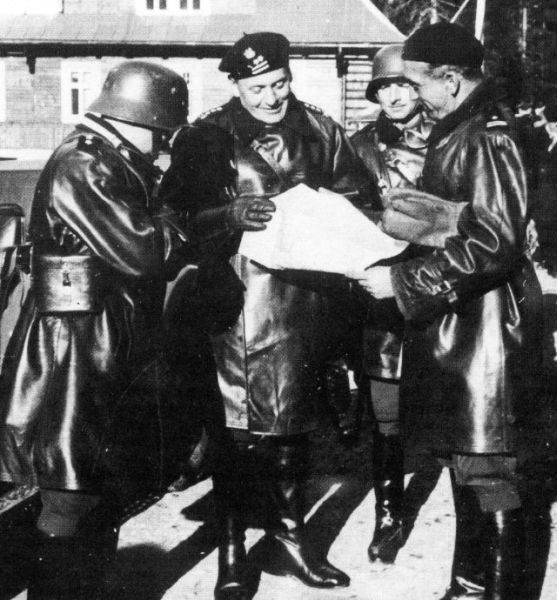
Maczek and some of his officers of the 10th Motorized Cavalry Brigade, the so-called Black Brigade. Source: Maczek Garizzim
The 10th Motorized Cavalry Brigade had lost nearly half of its personnel, in total around 1,200 men, but was not defeated. Even the Germans showed great respect for the Polish brigade and called it "the black brigade" after the black leather coats worn by Maczek’s officers, motorcyclists and tank crews. Maczek himself was well-loved by his men who gave him the nickname Baca, meaning shepherd in the mountain dialect of southern Poland
Colonel Maczek’s brigade was officially interned in Hungary, but with the help of the Hungarians most of the Polish soldiers managed to escape to France. On the night of 21/22 October 1939 Maczek and his family arrived in Paris. In France, Maczek was promoted to brigadier by General Wladyslaw Sikorski, the supreme commander of the Polish troops in France and a member of the Polish government in exile in Paris. Maczek was given command over the Polish military camp near Coëtquidan in Brittany, where more and more Polish soldiers arrived from Hungary, Romania and Syria, then a French protectorate. Maczek’s soldiers of the 10th Motorized Cavalry Brigade were well trained and battle hardened but received hardly any equiment from the French army command. The presence of the Polish was in fact merely tolerated by the French. The report, written by Maczek about his experiences in the fight against the German Blitzkrieg was completely ignored by the French although they could have drawn valuable lessons from it.
Only in March 1940 did the Poles get access to outdated French equipment consisting of a dozen old Renault FT-17 tanks and a few dozen lorries and motorcycles. It was not until the Germans bypassed the Maginot Line and invaded France on the 10th of May, that Maczek received the equipment he had asked for all the time, on the condition that he and his men would advance against the Germans right away. An odd condition, for the Poles did not have the opportunity to train with this new French equipment. Makzek therefore chose to join the fight only with his best men and leave the others to become familiar with the new tanks and armoured cars. They would be able to follow Maczek and his spearhead later on. Maczek was ordered to protect the flank of the 4th French army, situated in the vicinity of Reims. When the French withdrew at the end of May, the Poles had no option but to follow their allies. Meanwhile, all Polish troops of the newly founded 10th Motorized Cavalry Brigade had joined Maczek and on 16 June they started a surprise attack on the German troops near Montbard across the Canal de Bourgogne, to the northwest of Dijon. The Germans were completely surprised, but since the Polish were not supported by the French, Maczek’s brigade was decimated. Two days later he received the order to destroy all remaining materiel and to withdraw. The Poles escaped in small groups by way of Vichy France, Algeria, Morocco and Portugal to Great Britain. Maczek himself arrived in Bristol on 21 September 1940 by plane.
By order of the British, who intended to deploy the Poles in the defence units on the Scottish coast between Aberdeen and Edinburgh, all Polish soldiers gathered in Scotland. Immediately after arriving in Scotland, Maczek and General Sikorsky argued for the establishment of a Polish armoured division with British materiel. The Polish troops, initially a mere few thousand men were gradually enlarged with Polish soldiers who arrived from France and the Middle East. Furthermore, many Polish soldiers joined the Maczek army after escaping from forced German military service. The latest additions were volunteers who came from all over the world, especially sons of immigrants from North- and South America. The Polish army was provisionally called the 10th Brigade. Maczek, together with his family who had arrived from France, moved into a large house in Cairnhill near Forfar.
Definitielijst
- Blitzkrieg
- The meaning of this word is “Lightning War”. Short and fast campaign. As opposed to a trench war the Blitzkrieg is very quick and agile. Air force and ground forces work closely together. First used against the Germans (September 1939 in Poland.
- brigade
- Consisted mostly of two or more regiments. Could operate independently or as part of a division. Sometimes they were part of a corps instead of a division. In theory a brigade consisted of 5,000 to 7,000 men.
- Cavalry
- Originally the designation for mounted troops. During World War 2 the term was used for armoured units. Main tasks are reconnaissance, attack and support of infantry.
- Maginot Line
- French defence line along the French-German border.
- mid
- Military intelligence service.
First Polish Armoured Division
Apart from guarding the Scottish coastline, the Polish troops were engaged in endless training. In preparation for the formation of an armoured Brigade the emphasis was focused on the training on armour and specialization. For example, all Poles had to be able to drive heavy vehicles. In June 1941, with the German invasion of the Soviet Union, the danger of a German invasion of Britain had passed and the chances for Maczek to set up an armoured Brigade increased. However, he had to wait until 25 February 1942 for the official permission. Maczek was appointed Major General and Commander of the First Polish Armoured Division by General Sikorski. The first and most important task for General Maczek consisted of uniting out of the gathered lot of men, who had not only different backgrounds, but among whom a number did not even understand the Polish language. On 11 August of the same year, per day order, the First Polish Armoured Division was assigned its own emblem. As the year went by, the division increased in number and skill. Selection, training and armament improved in accelerated speed, the language barrier narrowed and the morale grew, especially due to Maczek’s enthusiasm.
On 6 June 1944, the day of the landing in Normandy, the First Polish Armoured Division comprised 16,000 men, 381 Cromwell, Churchill and M4 Sherman tanks, 473 artillery pieces and over 4000 vehicles. Assigned to the First Canadian Army, the First Polish Armoured Brigade landed on the beaches of Normandy, which were now firmly in the hands of the Allies. However, the battle of Normandy was still raging and General Maczek and his armoured Brigade played an important role in this battle. The Poles closed the so-called Falaise Pocket at Chambois, where tens of thousands of trapped German troops were destroyed or captured. Maczek advanced with the First Polish Armoured Division in the direction of Belgium, liberating many Northern French villages and towns such as Abbeville and St. Omer.
In Belgium Maczek liberated Ypres, Roeselare, Tielt, Ghent and Sint-Niklaas among others, before crossing the Dutch border into Zeeland Flanders. Here Axel, Hulst and Terneuzen were liberated by the Poles. In his diary, Makzek described his experience with the gratitude of the Dutch population as follows: "Our own losses were serious, but a tremendous compensation was the enormous enthusiasm of the liberated population, in particular that of Axel. The Dutch cordiality and hospitality faded the dark sides of the war. In spite of the great difference in language and customs the Polish soldier was welcomed here with a joy and enthusiasm that surpassed everything, including France and hospitable Belgium". As part of the Allied front line Maczek and his division advanced further from the Belgian border through Central and West-Brabant. On 4 October Baarle-Nassau was the first Brabant community to be liberated. This was followed by, among others, Alphen, Gilze, Bavel, Dorst and on 29 October the town of Breda, which fell into Polish hands with little damage. After fierce fighting near the Mark canal the Poles pushed on to the Moerdijk bridges, which were blown up by the retreating Germans. The Allied and therefore also the Polish advance came to a temporary halt.
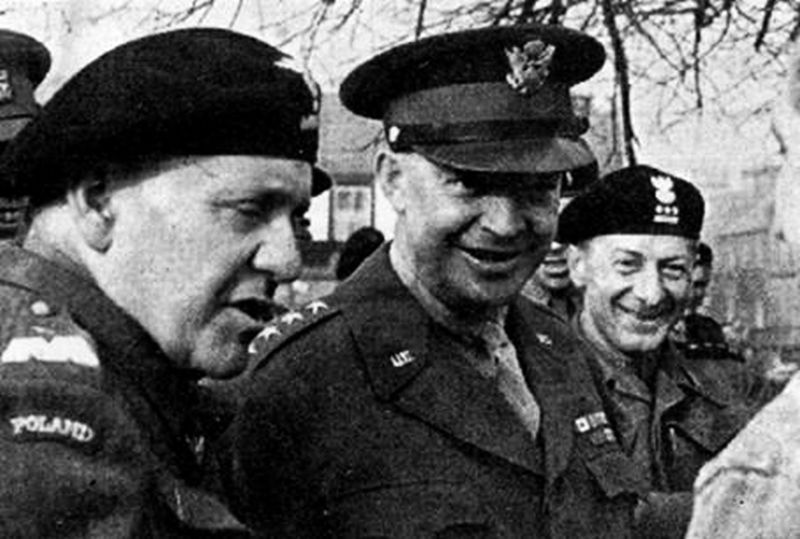
Commander of the First Polish Armoured Division Maczek, together with General Eisenhower, the supreme commander of the Allied forces in Western Europe. Source: Maczek Garizzim
During the winter of 1944-1945 the grateful Breda became the garrison town for the First Polish Armoured Division. Maczek had managed to save the town by not bombarding it with artillery but instead by invading it from three sides, so that the Germans could retreat only to the north. Partly due to this, the Polish liberators were adored by the people of Breda and Maczek and his men were proclaimed honorary citizens of the Brabant town by the mayor, B.W.T. van Slobbe. Also, because of their shared Catholic background, things went exceptionally well between the Poles and the Breda citizens. During the winter the Polish soldiers were warmly welcomed and were invited into peoples homes where they were, in effect, admitted as members of the family. General Maczek wrote about this in his diary: "The gratitude of the residents of Breda was not an empty slogan. Many soldiers of the division found here their dearest friends, many even found their home here and started families. For the time being, this gratitude expressed itself in a flurry of joy in the streets of the town, in inscriptions Dziekujemy wam Polacy (We thank the Poles) in every shop window and in genuine Dutch hospitality. This surpassed the boundaries of the proverbial hospitality, the best billets were reserved for the Polish soldiers. The town remained loyal to the division, despite the fact that many other allied units passed through the town during the winter."
On 8 February 1945 the great allied offensive against Germany began. The First Canadian Army crossed the Dutch-German border between the Meuse and the Rhine after which the First Polish Armoured Divison moved north as a spearhead along the border. In the province of Drenthe the Dutch-German border was crossed again and Maczek’s division liberated, among other towns, Emmen and later on Ter Apel, Stadskanaal and Winschoten in the province of Groningen. Near the German villages of Oberlangen and Niederlangen, two POW camps were freed, in which 1,700 Polish women were interned, survivors of the Warsaw uprising, which had been bloodily put down by the Germans on 2 October 1944. On 6 May 1945, Maczek occupied Wilhelmshaven and accepted there the surrender of 34,000 German soldiers and over 200 Kriegsmarine vessels. Two weeks later Maczek said goodbye to his armoured division because he was transferred to Scotland, where he assumed command of the First Polish Army Corps. The First Polish Armoured Division would be dissolved in March 1947. In September 1945 Stanislaw Maczek was promoted to lieutenant general and became supreme commander of all Polish army units in Great Britain.
Definitielijst
- Brigade
- Consisted mostly of two or more regiments. Could operate independently or as part of a division. Sometimes they were part of a corps instead of a division. In theory a brigade consisted of 5,000 to 7,000 men.
- invasion
- Armed incursion.
- Kriegsmarine
- Germa navy. Part of the Wehrmacht next to Heer and Luftwaffe.
- offensive
- Attack on a smaller or larger scale.
- POW
- Prisoner of War.
- Soviet Union
- Soviet Russia, alternative name for the USSR.
Exile
Since a communist regime was established in Poland after the Second World War under the strict supervision of the Soviet Union, many Polish soldiers were unable to return to their homeland after the demobilization of the Polish army in exile in 1947. The communist government refused to recognize the merits of Maczek and the First Polish Armoured Brigade, and Maczek, in turn refused to set foot in Poland until democratic rule was established in his home country. He acknowledged only the Free Polish Government in London. As a result, Maczek was deprived of his Polish citizenship due to his aid to the "imperialist England" and the "capitalist America". He was forced to stay in Great Britain. Likewise, many of his men did not return to Poland, but settled in the United States, Canada, France, Belgium and the Netherlands. The Polish former soldiers did not receive a pension from the British government as they were not considered Allied soldiers. Maczek and his family received a one-time payment of £ 1,000 and a loan of £ 2,000. With these, the General bought a modest working class home: Ardenstreet 9, in the Marchmont district of Edinburgh, Scotland. On 29 October 1949 Maczek unveiled the Polish monument in the Wilhelminapark in Breda. He was now particularly attached to the Brabant town and its inhabitants since here he received the honour and recognition that he and his First Polish Armoured Brigade deserved.
To provide for the sustenance of his family and for the care of his handicapped daughter (Margaret was mentally sound, but spastic and in a wheelchair), Stanislaw Maczek was forced to take all kinds of jobs from the age of 57. He was, among other things, shop assistant and bartender at the Edinburgh Sports Club squash centre. Later he was employed as a bartender and a pump attendant for his former subordinate J.S. Tomasik, who had opened the Learmonth Hotel in Edinburgh’s West End. Despite the difficult financial situation in which the Maczek family found themselves, it was possible for son Andrzej to study at the universities of Oxford and Sheffield. In 1961 Stanislaw Maczek published his war memoirs. In these he made an extensive account of his military career without paying much attention to his personal contribution. This modesty was typical for Stanislaw Maczek. It was not until the 1960s, that Maczek received some sort of pension, not from the British or Polish governments, but from the Dutch government, on the insistence of the city of Breda. Also, Breda offered him a house, but, although deeply moved, Maczek declined this offer since he had made a living for his family in Scotland. In 1964, part of the Polish Road (formerly part of the Molengracht) was renamed General Maczek Street and five years later Maczek drove in a tank through ‘his’ street. Not only was Stanislaw Maczek a very modest man, he was also very religious. He was a strong supporter of the Roman Catholic Church and was particularly pleased when the Polish Cardinal Karol Josef Woityla was elected as Pope on 16 October 1978. In the early 1980s, he went together with his wife and youngest daughter to an audience with Pope John Paul II, who called him "General Maczek, a piece of our history." In 1981 Stanislaw Maczek paid a final visit to his beloved town Breda and gave his name to the local General Maczek Museum.
After the Cold War, on 1 November 1990, the government of the new Polish Republic appointed Stanislaw Maczek to Lieutenant General. Moreover, he was again very welcome on Polish soil, but by now, the general had become too old to undertake the journey to his home country. On his centenary, 31 March 1992, he was awarded the highest Polish award: the Order of the White Eagle. On 11 December 1994 Stanislaw Wladyslaw Maczek died at the age of 102 in his Edinburgh home. According to his wishes he was buried with his men in the Polish Military Field of Honour at Breda. This happened after lying in state at the City Hall on 23 December. His grave is just as modest as the general himself. A simple standard grave without mentioning all his awards. As a commander he was in front, but left from the flank and not in the middle, for the monument on the Field of Honour had to retain its central position.
On 27 April 1995, Maczek’s wife Sophia died at the age of 85. She was buried quietly in Edinburgh. Their son Andrzej (1931) still lives in Sheffield and the youngest daughter Margaret still lives in Edinburgh. The whereabouts of daughter Renata are unknown.
Definitielijst
- Brigade
- Consisted mostly of two or more regiments. Could operate independently or as part of a division. Sometimes they were part of a corps instead of a division. In theory a brigade consisted of 5,000 to 7,000 men.
- Soviet Union
- Soviet Russia, alternative name for the USSR.
Epilogue
General Maczek was an exceptionally driven, brave and modest soldier. To highlight this, the following is the account of the British liaison-officer Michael A. Thomas, who was assigned to Maczek’s staff during the battle of Falaise on 19 August 1944 and who wrote an obituary for Maczek 50 years later.
In the middle of the battle of Falaise, on 19 August 1944, I was sent to General Maczek, Commander of the 1st Polish Armoured Division - under somewhat dramatic circumstances - as a British liaison officer, writes Michael A. Thomas [Friday, 16 December 1994].
My predecessor had fallen the day before and I was to board my jeep the same night: "I can tell you only approximately where his tactical HQ would be at the moment," said Brigadier Peto. "The Poles being more daring than any other unit are usually far ahead and probably cut off somewhere."
Passing through heavy German fire, I finally found the general at noon the next day. Indeed, he was cut off and the German lines were only a few hundred yards away. The stocky man, short necked with a peasant face not unlike the Polish Pope, looked at me briefly: "I not need [sic] liaison officers I need ammunition." Then he ordered his three HQ tanks, which did not possess a single round, to circle around the hill in front of his headquarters to give the Germans the impression of the presence of overwhelming armour, like extras on the stage.
He was the born troop commander more than a staff officer. Forceful, humorous, intelligent, imaginative, crafty even, and immensely brave. He hardly ever stayed in his ACV (Armoured Control Vehicle) but usually went forward in his command tank directing the battle from the forward line as in former centuries. At night, like his men, he slept underneath his tank.[1]
Notes
- Michael A. Thomas, "Obituary: General Stanislaw Maczek", Independent, 16 December 1994
Information
- Article by:
- Peter Kimenai
- Translated by:
- Cor Korpel
- Published on:
- 19-01-2025
- Feedback?
- Send it!
Related sights
Sources
- MACZEK, S., Van paardenwagen tot tank, Van Ierland Uitgeverij BV, Breda, 2009.
- PEETERS TH., Eerste Poolse Pantserbrigade in Nederland, Brabantia Nostra, Breda, 1978.
- PEETERS, T., 50 Jaar Breda met een Pools stempel, Van Olst Presentaties v.o.f., Waalwijk, 1998.
- PEETERS, T., Het Poolse aandeel in de overwinning, Rijense Handelsdrukkerij B.V., Rijen, 1984.
- Library of the General Maczek Museum in Breda
- www.maczek.garizzim.pl
- www.maczekmuseum.nl
- www.makers.org.uk
- www.polishgreatness.com
- www.vereniging-1epoolsepantserdivisie-nederland.nl
- www.polishwargraves.nl
- www.independent.co.uk
- www.en.wikipedia.org
- www.pl.wikipedia.org
